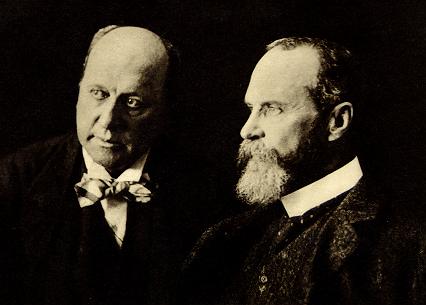"Will tax stimulus stimulate investment?
On Monday, the form of potential fiscal stimulus, 2009-style, took a step forward detail-wise. From the Wall Street Journal:
“President-elect Barack Obama and congressional Democrats are crafting a plan to offer about $300 billion of tax cuts to individuals and businesses(ODDLY, THAT'S THE SAME AMOUNT AS MY PROPOSAL FOR THESE TWO TAX CUTS ), a move aimed at attracting Republican support for an economic-stimulus package and prodding companies to create jobs( I WANT TO USE IT AS AN INCENTIVE TO ATTACK THE FEAR AND AVERSION TO RISK, WHICH I BELIEVE TO BE THE MAIN PROBLEM NOW.).
“The size of the proposed tax cuts—which would account for about 40% of a stimulus package that could reach $775 billion over two years( MY FIGURE IS $700 Billion )—is greater than many on both sides of the aisle in Congress had anticipated.”
The plan appears to make concessions to both economic theory—which suggests that consumers will save a relatively large fraction of temporary increases in disposable income—and recent experience—which seems to suggest that what works in theory sometimes works in practice. Again, from the Wall Street Journal:
“Economists of all political stripes widely agree the checks sent out last spring were ineffective in stemming the economic slide, partly because many strapped consumers paid bills( ISN'T THAT SPENDING? ) or saved the cash( I HOPE SOME PEOPLE DO. JUST NOT EVERYBODY. ) rather than spend it. But Obama aides wanted a provision that could get money into consumers’ hands fast, and hope they will be persuaded to spend money this time if the credit is made a permanent feature of the tax code.”( I THINK THAT THE TAX HAS TO BE PHASED OUT TO ENCOURAGE SPENDING SOONER RATHER THAN LATER.)
As for the business tax package:
“… a key provision would allow companies to write off huge losses incurred last year, as well as any losses from 2009, to retroactively reduce tax bills dating back five years. Obama aides note that businesses would have been able to claim most of the tax write-offs on future tax returns, and the proposal simply accelerates those write-offs to make them available in the current tax season, when a lack of available credit is leaving many companies short of cash.
“A second provision would entice firms to plow that money back into new investment( THIS IS WHAT I WOULD FAVOR ). The write-offs would be retroactive to expenditures made as of Jan. 1, 2009, to ensure that companies don’t sit on their money until after Congress passes the measure.”
A relevant question here is really quite similar to the one we ask when the tax cuts are aimed at households: Will the extra cash be spent? This graph provides some interesting perspective:
Relative to net worth (of nonfarm nonfinancial corporate businesses), private fixed investment has been in consistent decline since the second quarter of 2006. (The level of fixed investment has declined in each quarter, save one.) In fact, the investment/net worth ratio is currently at a postwar low. ( IS HOUSING INCLUDED? )
Why? A couple of hypotheses come to mind. (1) Firms are extremely pessimistic about the outlook and see relatively few worthwhile projects in which to commit funds.( TRUE ) (2) Credit markets are so impaired that the net worth of firms—a critical variable in mainstream models of the so-called “credit channel” of monetary policy—is supporting increasingly smaller levels of lending.( TRUE ) (3) Nonfinancial firms, like financial firms, are deleveraging and hence not expanding( TRUE ). ALL OF THESE ARE PROBABLY TRUE TO SOME EXTENT, BUT WHEN I LOOK AT THE GRAPH, IT SEEMS THAT INVESTMENT STARTED GOING DOWN DURING THE TECH BUBBLE YEARS AND CONTINUED IN THE HOUSING BUBBLE YEARS. I'M WONDERING IF THERE HASN'T BEEN A MASSIVE AMOUNT OF MONEY INVESTED IN STOCKS AND HOUSING AS OPPOSED TO, SAY, MANUFACTURING. SEE BELOW.
Of course, even if one of these hypotheses is true, it need not be the case that marginal dollars sent in the direction of businesses will go uninvested. But it makes you wonder.( I STILL FAVOR MY IDEA. THE GRAPH ISN'T CONCLUSIVE. )
By David Altig, senior vice president and research director at the Atlanta Fed"
Here's Casey Mulligan:"TESTING THE THEORY WITH DATA FROM 2008

Another fascinating property of this episode is that the shocks to spending are on the order of magnitude (100s of billions of dollars) of the kinds of fiscal stimuli being recommended by some economists.
So, I'm wondering if the Tech and Housing Bubbles diverted money away from other types of investment. If so, we might want to rethink subsidizing the purchases of houses ( I'm for a general housing subsidy for low-income people. ) It would seem to me, interpreting Mulligan's points for my own purposes, that now would be an especially felicitous time to encourage investment in sectors that have been recently shunned.








































No comments:
Post a Comment